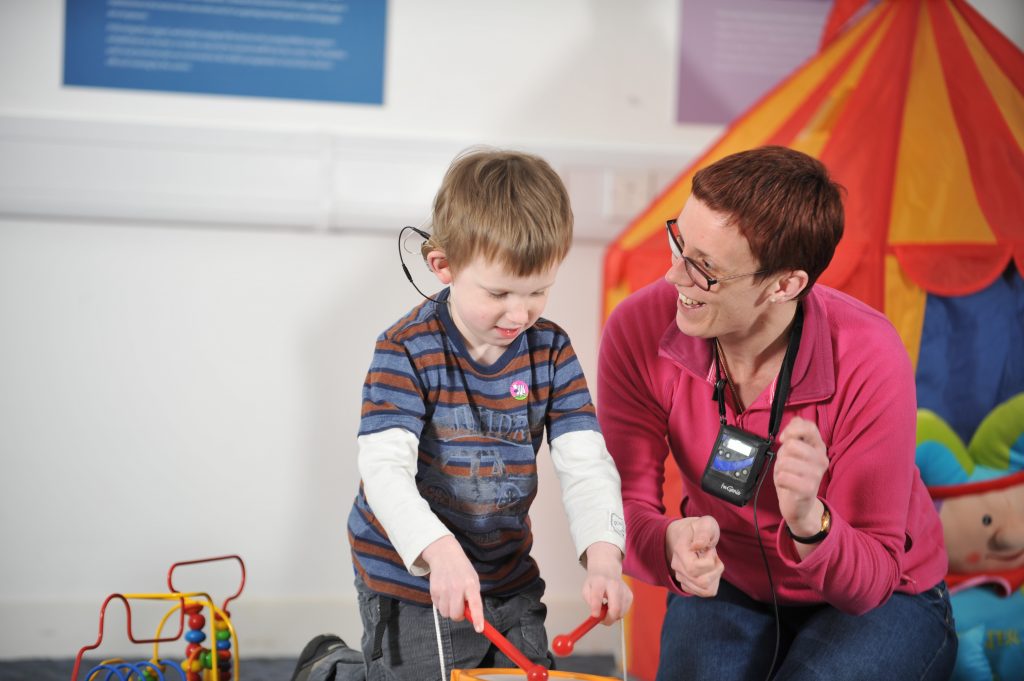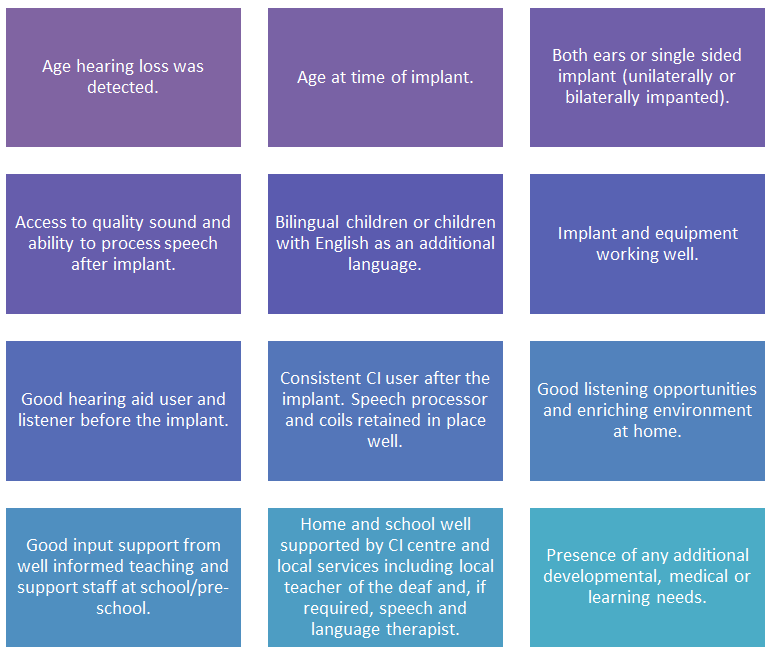Considerations for children receiving cochlear implants at primary age:

- The child will miss school (hospital stay, post operative recovery, visits to the implant centre for tuning etc.)
- The child may be unsettled emotionally from the operation and may be experiencing issues which he/she can not express, such as taste disturbance, dizziness or tinnitus.
- The child needs to adjust to wearing equipment which looks and feels different from a hearing aid and has different controls. In some cases, it can be beneficial to teach the child’s class about cochlear implants, their limitations for example when hearing in noise and that they are not a “quick fix”.
- To maximise progress the child should be encouraged to wear their processors all the time they are awake. Today cochlear implants are often splash proof or have waterproof covers, so a child can use their processors even when they are in the bath.
- The child will need time to adjust to the new sound input. Cochlear implants sound very different to hearing aids or normal hearing and we live in a very noisy world. They may not appreciate the “new” sound that the implant gives and so may need help to realise that it is useful.
- In order for the child to make sense of what they are hearing, they may benefit from a structured listening programme. Rehabilitation staff at the implant centre can help with this.
Factors to consider for listening programmes:

- First and foremost, MAKE IT FUN!
- Early listening programmes should be carried out in a quiet environment where sounds will be well contrasted with silence.
playing drums - Children learn best when they are emotionally happy and relaxed. It’s important to encourage and respond positively to the content of their attempts to communicate. In this way they will be happy to have a go and not fear failure
- Children need to learn about environmental sounds as well as speech. Going on “sound” walks to listen to sounds in the school setting and identifying them together is an active way of doing this.
- Free play with musical instruments provides children with the chance to control the sound they are exposed to. The adult can teach new vocabulary such as high and low pitch, and try to discriminate different instruments when they are out of view.
- Listening apps can be motivating for the child.
- Encourage peer to peer interaction
Activity
Key concepts
- What are the communication options for a child with a cochlear implant?
- What factors are important to consider in the early stages after implantation?
- How to support a child with a cochlear implant with language development in primary school.
- Understanding the importance of social interaction.
- What resources are available to support primary school staff.

